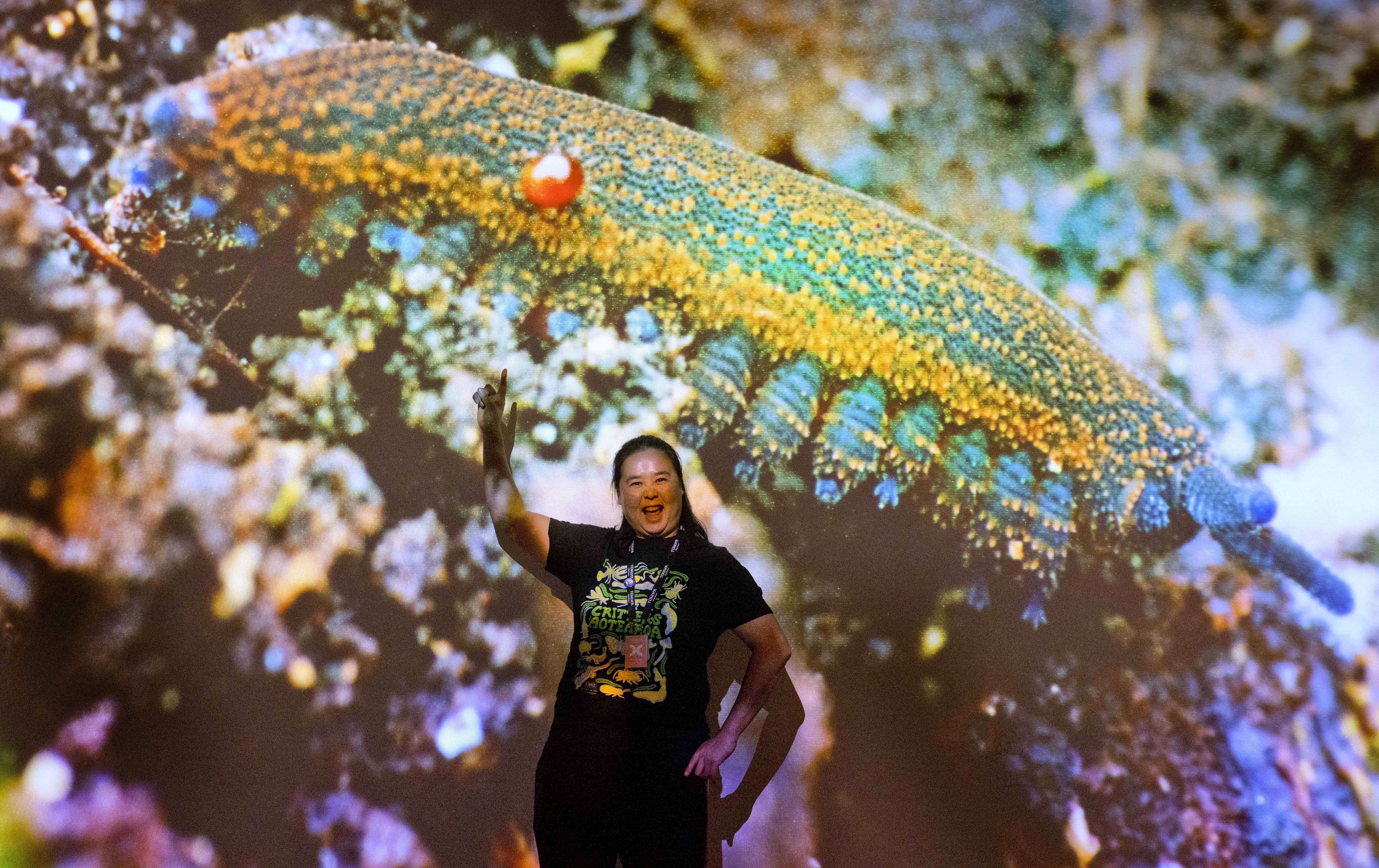
The ngāokeoke, or New Zealand velvet worm, squirmed past tough competition from the praying mantis, moth and stick insect to don the crown of New Zealand’s top invertebrate for 2025.
Tūhura Otago Museum natural science collections technician On Lee Lau led the campaign for the local favourite, which had "captured the hearts of supporters across the motu".
"Amidst strong competition, we are thrilled to secure the win for the velvet worm and help raise awareness of these cherished native creatures," she said.
"There is a lot of hidden diversity amongst velvet worm species, so we’re excited to see what researchers uncover about different populations, both around Dunedin and across the globe."
Described as "deadly assassins", the ancient invertebrates reside in the undergrowth in New Zealand’s bush, urban parks and gardens.
Using super-soaker nozzles on either side of their heads, they douse prey with a torrent of sticky slime, slowly dissolving it into a soup.
In 1988, Dunedin became a global hot spot for velvet worm conservation after local resident Dave Randle discovered hundreds of velvet worms living in his Caversham garden, prompting the creation of the first reserve to protect the velvet worm and setting a precedent for conservation efforts in New Zealand.
Museum marketing manager Charlie Buchan said Dunedin’s achievement of ticking off winners of both New Zealand Bird of the Year — won by the hoiho — and Bug of the Year cemented its status as New Zealand’s wildlife capital.
"With the victories in Bug of the Year and Bird of the Year — arguably New Zealand’s second-biggest election — political parties might soon be knocking on our door for some campaign and marketing intel for next year’s New Zealand general election," he said.
Bug of the Year committee member Connal McLean said the competition was a "super-close race" this year.
"The praying mantis was only 110 votes behind the worm out of nearly 25,000 votes," he said.
The whē (New Zealand praying mantis) came second, while another unusual forest dweller — the giant springtail — took third place. The ātaka (exquisite Olearia owlet moth) and the rō (giant stick insect) came in fourth and fifth, respectively.
— APL












